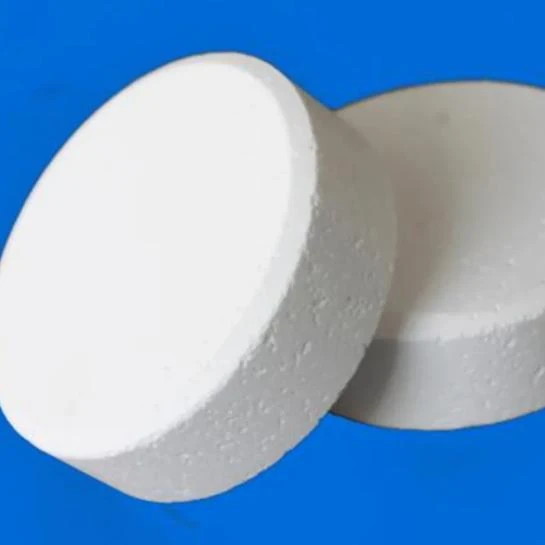
Understanding the Role of Sodium Acid Pyrophosphate in Food Additives and Preservation
Understanding Sodium Acid Pyrophosphate in Food Uses, Safety, and Concerns
Sodium acid pyrophosphate (SAPP) is a commonly used food additive that holds significant importance in the food industry. As a leavening agent and a stabilizer, SAPP contributes to the texture, flavor, and overall quality of various food products. This article aims to delve into the functional role of SAPP, its safety profile, and the concerns associated with its use in food.
What is Sodium Acid Pyrophosphate?
Sodium acid pyrophosphate is a white, crystalline powder that is highly soluble in water. It is formed by the reaction of sodium phosphate and phosphoric acid, resulting in a compound that possesses a variety of applications in food processing. Often categorized as a phosphate, SAPP plays a crucial role in the formulation of baked goods, snacks, and various processed foods.
Uses of Sodium Acid Pyrophosphate in Food
As a leavening agent, SAPP helps baked goods rise by producing carbon dioxide gas when it reacts with alkaline ingredients. This reaction is particularly beneficial in recipes that do not include baking soda or other leavening agents, as it promotes the expansion and lightness of products like cakes, muffins, and pancakes. Additionally, SAPP is commonly used in potato products, especially in the production of dehydrated potatoes, to maintain color and enhance texture.
Another significant use of SAPP is as a stabilizer in processed foods. It helps retain moisture, improves the quality of frozen and refrigerated items, and prevents the separation of ingredients. Because it can bind to metal ions, SAPP also acts as an effective emulsifier, further aiding in maintaining the consistency of sauces, dressings, and dairy products.
sodium acid pyrophosphate in food

Safety and Regulation
Sodium acid pyrophosphate is recognized as safe by various food safety authorities, including the U.S. Food and Drug Administration (FDA) and the European Food Safety Authority (EFSA). It is generally categorized as Generally Recognized As Safe (GRAS), allowing it to be used in specific food applications without excessive restrictions. However, like all food additives, it is essential to consume SAPP in moderation, as excessive intake of phosphates can lead to health concerns, particularly for individuals with kidney disorders.
Studies have suggested that while SAPP itself is safe for consumption, high levels of phosphates in the diet can interfere with calcium absorption, potentially leading to imbalances in bone health over time. Therefore, it is advisable for consumers to be mindful of their overall phosphate intake by balancing diets rich in whole foods and minimizing processed food consumption where additives like SAPP are prevalent.
Concerns and Public Perception
Despite its safety profile, the presence of sodium acid pyrophosphate in food products can raise concerns among health-conscious consumers. The trend towards clean eating has prompted individuals to scrutinize ingredient labels more closely, aiming to avoid artificial additives and preservatives. This growing awareness has influenced food manufacturers to reevaluate their formulations, often opting for natural alternatives or minimizing the use of additives.
In conclusion, sodium acid pyrophosphate serves multiple functional roles in food production, primarily as a leavening agent and stabilizer. Recognized as safe by regulatory bodies, it is important for consumers to remain informed about its usage and potential health implications. As the food industry continues to evolve towards transparency and health-centric formulations, understanding additives like SAPP can empower consumers to make informed dietary choices.
-
Pure Sodium Dichloroisocyanurate Dihydrate | Powerful DisinfectantNewsAug.29,2025
-
Industrial Chemicals: Quality & Purity for Every IndustryNewsAug.28,2025
-
Nitrile Rubber Honoring Strict Production StandardsNewsAug.22,2025
-
Aspartame Ingredients Honoring Food Safety ValuesNewsAug.22,2025
-
Fertilizer for Balanced Plant NutritionNewsAug.22,2025
-
Cyanide Gold Processing with High Purity AdditivesNewsAug.22,2025
-
Formic Acid in Textile Dyeing ApplicationsNewsAug.22,2025
Hebei Tenger Chemical Technology Co., Ltd. focuses on the chemical industry and is committed to the export service of chemical raw materials.
-

view more DiethanolisopropanolamineIn the ever-growing field of chemical solutions, diethanolisopropanolamine (DEIPA) stands out as a versatile and important compound. Due to its unique chemical structure and properties, DEIPA is of interest to various industries including construction, personal care, and agriculture. -

view more TriisopropanolamineTriisopropanolamine (TIPA) alkanol amine substance, is a kind of alcohol amine compound with amino and alcohol hydroxyl, and because of its molecules contains both amino and hydroxyl. -

view more Tetramethyl Thiuram DisulfideTetramethyl thiuram disulfide, also known as TMTD, is a white to light-yellow powder with a distinct sulfur-like odor. It is soluble in organic solvents such as benzene, acetone, and ethyl acetate, making it highly versatile for use in different formulations. TMTD is known for its excellent vulcanization acceleration properties, which makes it a key ingredient in the production of rubber products. Additionally, it acts as an effective fungicide and bactericide, making it valuable in agricultural applications. Its high purity and stability ensure consistent performance, making it a preferred choice for manufacturers across various industries.





